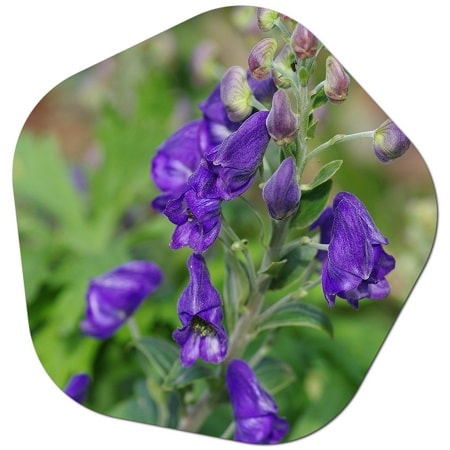Where is Aconitum flower native?
What is Aconitum good for? Plants of this genus are commonly used in the treatment of joint pain by applying/wrapping them directly on the painful area. Herbaceous perennial plants 100-150 cm tall. Erect and occasionally branched stems. Fleshy roots available Characteristic helmet-shaped flowers stem in the case of rasemus. Flowers usually blue sometimes white, sometimes pink. The flower blooms in July and August.
How poisonous is Aconitum? Is Aconitum Poisonous? POISONOUS PARTS Whole plant, especially leaves and roots TOXIC COMPOUNDS Aconitine and similar compounds (sodium channel activators) Some Species of the Flower: Aconitum nasutum, Aconitum anthora, Aconitum cochleare, Aconitum orientale etc.

Aconitum, commonly known as monkshood or wolfsbane, is a genus of flowering plants that includes several species. Aconitum species are native to various regions in the Northern Hemisphere, with a concentration in temperate and mountainous areas. The native regions of Aconitum flowers include:
- Europe: Several Aconitum species are native to different parts of Europe, including Central and Eastern Europe.
- Asia: Aconitum species are found in various Asian regions, such as the Himalayas, Siberia, China, and Japan. They are often associated with mountainous areas.
- North America: Some Aconitum species are native to North America. In particular, Aconitum columbianum, known as Columbian monkshood, is found in parts of North America.
- Northern Africa: A few Aconitum species are also found in the northern regions of Africa.
The specific species within the Aconitum genus may have different native ranges and habitats. Aconitum plants are known for their distinctive hood-shaped flowers and are often cultivated for ornamental purposes. It’s important to note that while the plant has historical and cultural significance, certain species within the Aconitum genus contain highly toxic alkaloids and should be handled with care. In some regions, Aconitum has been used historically in traditional medicine, but its toxicity makes it a plant that should be treated cautiously.
Where did Aconitum originate?
The genus Aconitum, which includes plants commonly known as monkshood or wolfsbane, originated in various regions of the Northern Hemisphere. Aconitum species are native to parts of Europe, Asia, and North America. The genus has a diverse distribution, with different species adapted to various climates and habitats.
The historical and geographical origins of Aconitum can be traced to the natural evolution and dispersion of these plants in temperate and mountainous regions. The genus has likely evolved over time in response to environmental conditions in its native habitats.
Aconitum has a long history of traditional uses, both medicinal and toxic, in different cultures. Some species have been used in traditional Chinese medicine, while others have been associated with European folklore and herbalism. The toxicity of certain Aconitum species, due to alkaloids present in the plants, has contributed to their historical use as poisons and medicines, depending on the dosage and preparation.
It’s important to note that while Aconitum plants have historical and cultural significance, they are toxic and should be handled with extreme caution. The toxic alkaloids in these plants can lead to severe health issues, and ingestion can be fatal. As a result, Aconitum should not be used without proper knowledge and expertise, and any traditional or medicinal uses should be approached with great care and under the guidance of qualified professionals.





